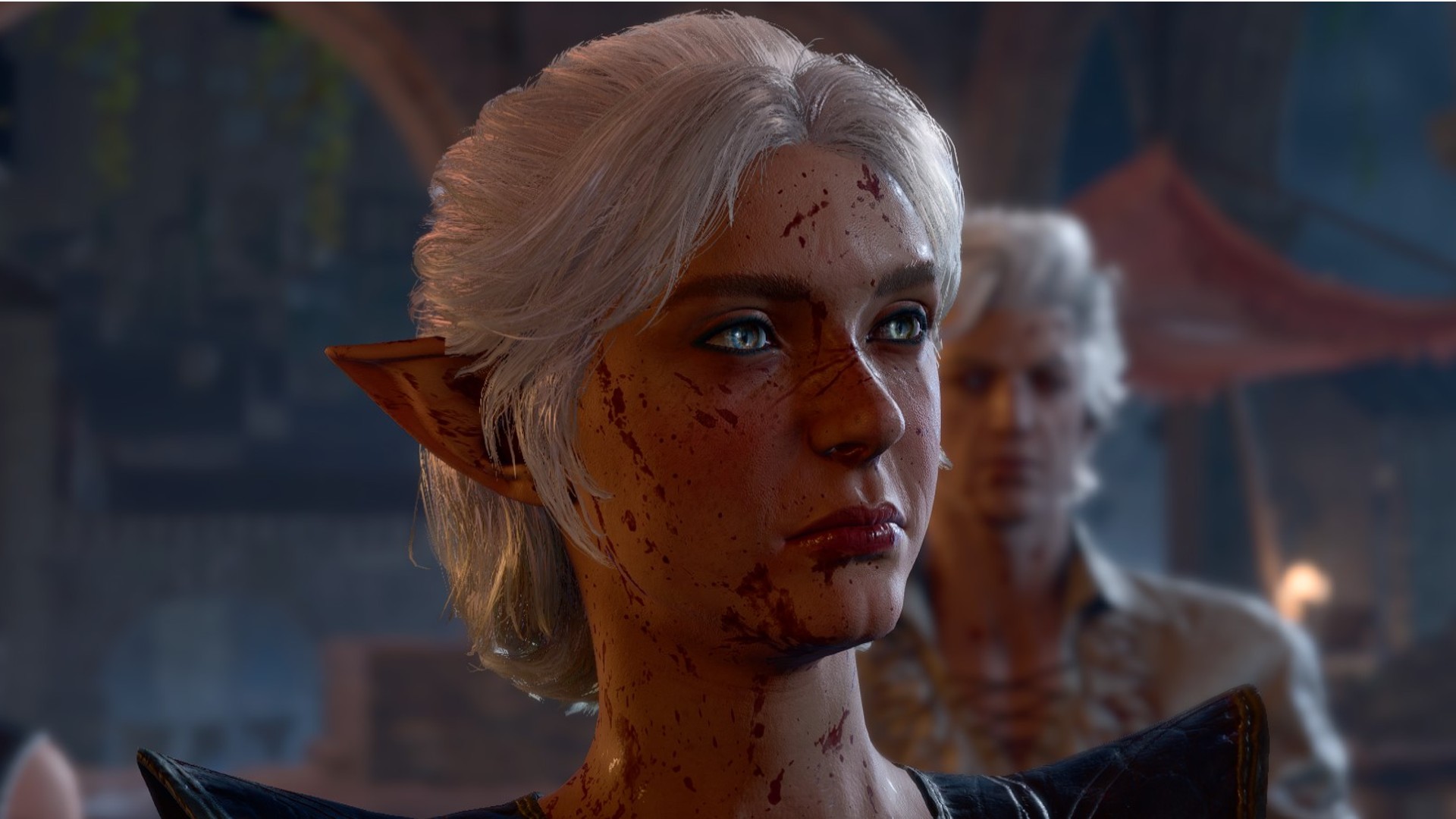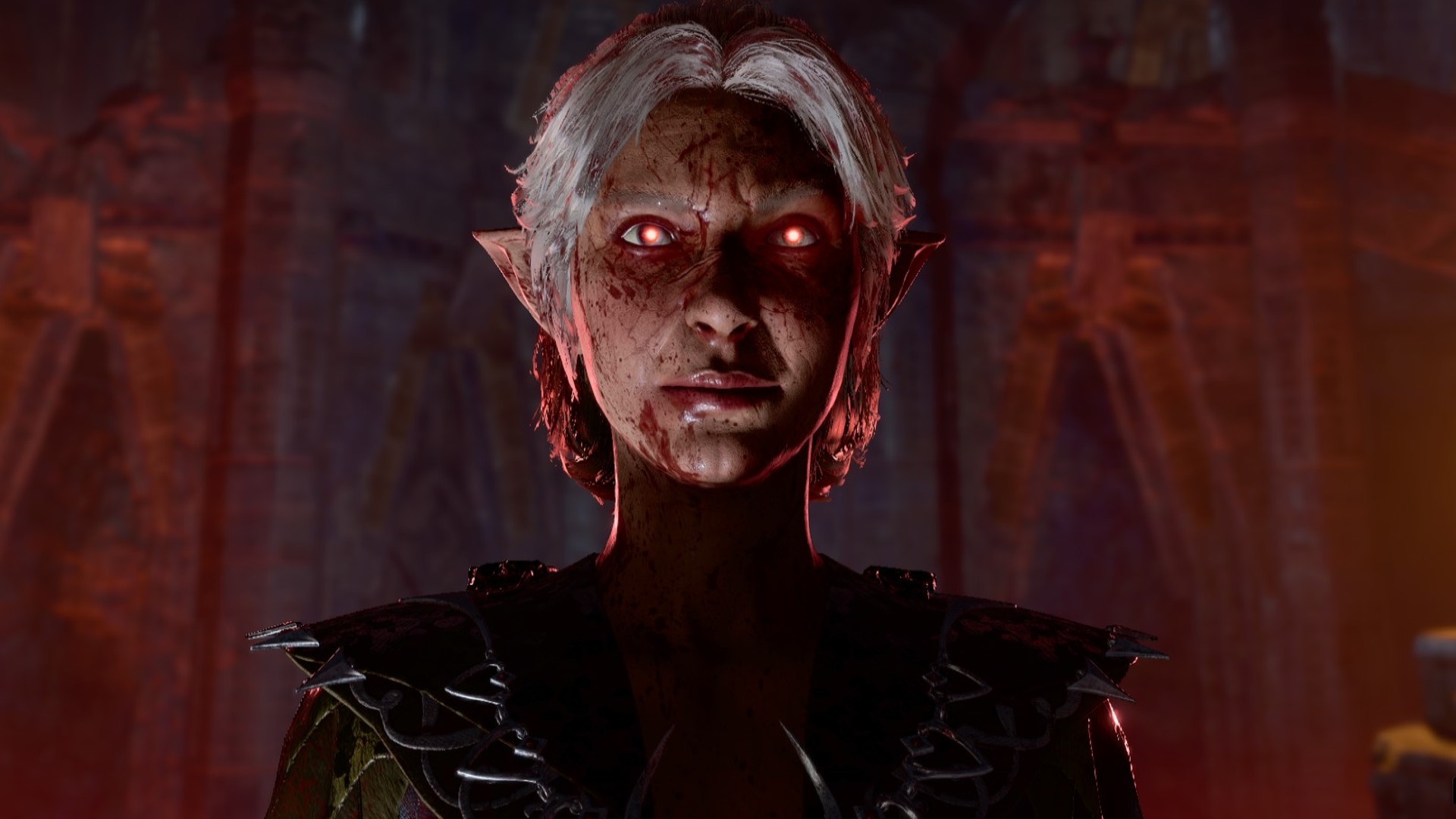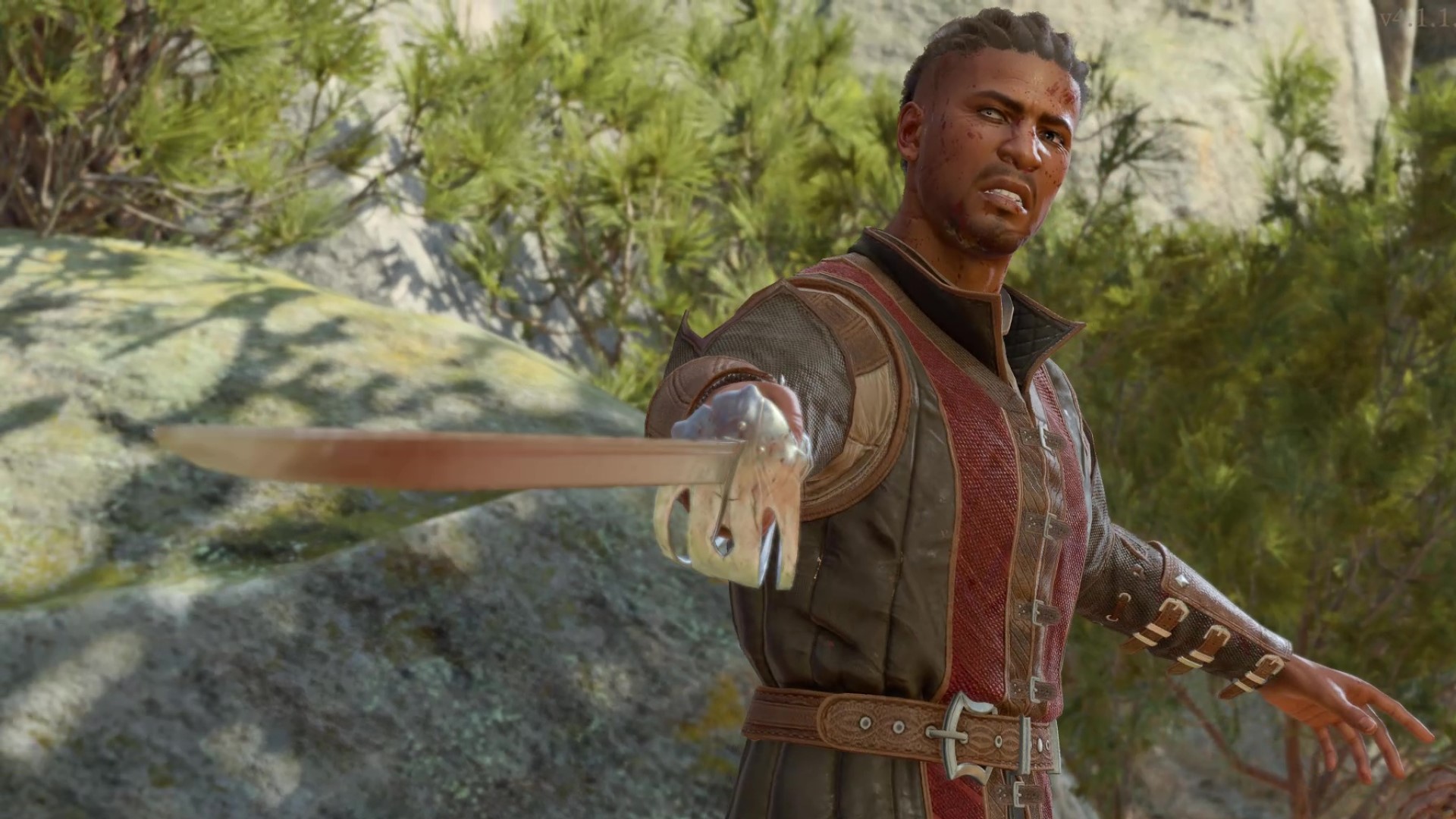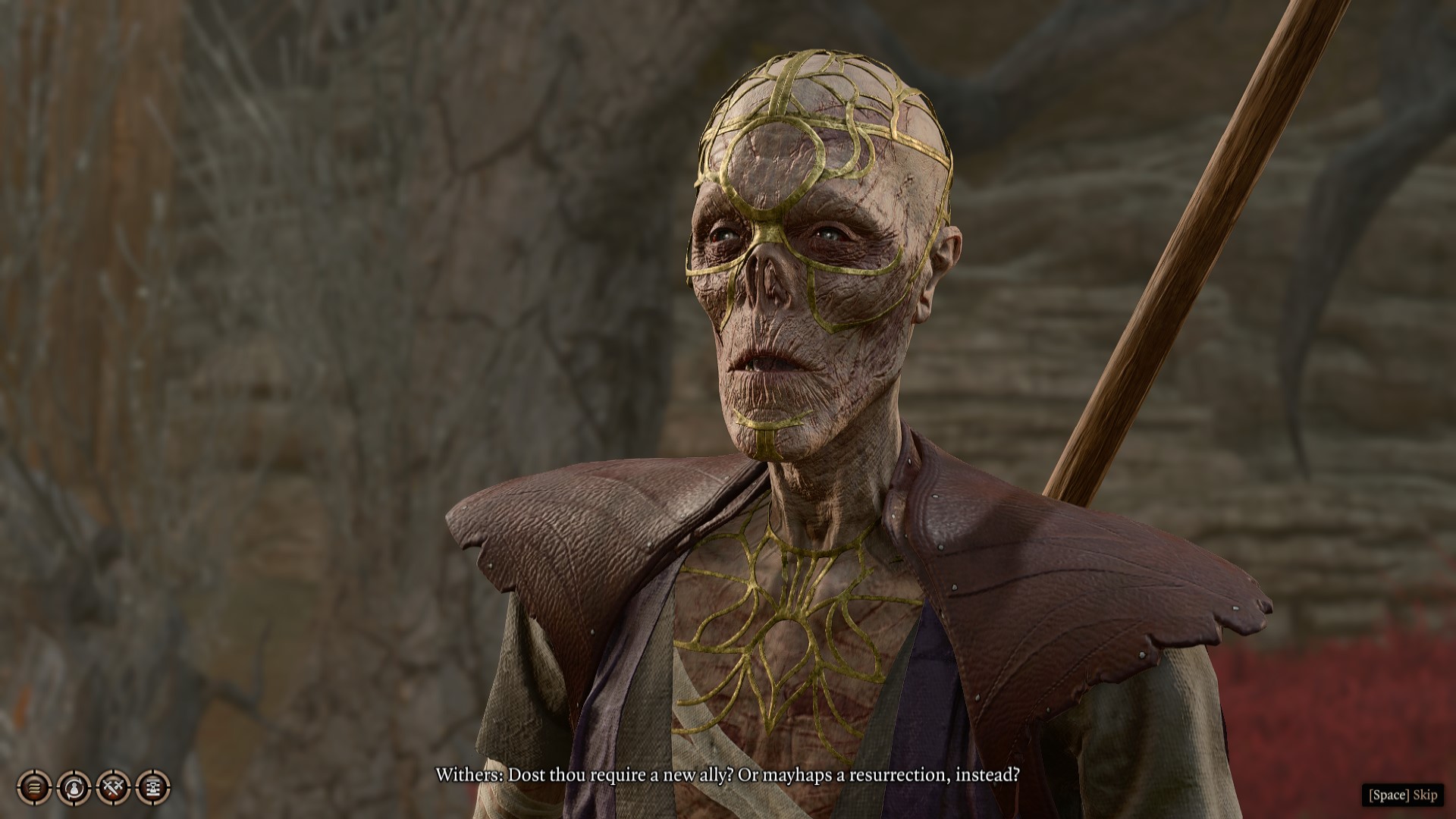Dark Urge is the canon story of Baldur's Gate 3 and I can prove it
Opinion | Your Tav is pretty and all, but they're no Durge

If storytelling is king, that king should be crowned Dark Urge. Despite the Baldur's Gate 3 devs' recommendation of playing a fully original character first, I decided my first foray into Faerûn would be as a Haunted One. Tormented by violent thoughts and disturbing impulses, the BG3 Dark Urge origin storyline surprised me with its narrative depth and dramatic stakes. Every decision felt dire, every character's death had harsh consequences – and, in all honesty, I think it's a more fleshed-out story than the one we're treated to as an original character.
I'm rounding out my third playthrough of the game right now, but I still hold up my Dark Urge experience as the pinnacle of Baldur's Gate 3. Whether you choose to embrace or reject your innate wickedness, the heightened stakes and complexity of the so-called "Durge" just can't be found as a regular Tav. So much so, I would argue that Dark Urge is the only way to play Baldur's Gate 3 if a satisfying story is what you're after. I have receipts if you don't believe me – and don't worry, I'll keep it spoiler-free.
Canon fodder


In many ways, Lae'zel is the real main character of BG3 - and that's why I didn't miss her when I played Dark Urge.
I'm aware that there's no such thing as a true "canon" storyline in a Dungeons and Dragons game. If there were one in BG3, though, it'd be the Durge's. The simple fact of the Dark Urge's existence means your character is inexorably linked to the main plot, far more so than in the original character campaign. You're not just another everyman hero with a worm in their brain, but a true stakeholder in the outcome of a long, perilous journey.
Since the Dark Urge is considered an origin character, much like your core six companions, it will undergo a considerable amount of personal development as the story progresses. Rather than watching from the sidelines, you're implicated in the action as a real main character. I found this out when, thanks to my despicable nature and relatively low approval rating with most companions, the game chose a romantic partner for me so the story could move ahead. Funnier still, it chose the most heroic, lawful good-aligned character for the job.

Romancing the Blade of Frontiers, Wyll Ravengard, as a wicked little Dark Urge monk, was an utter delight. The personality contrast between Wyll and my Durge made a particularly brutal Dark Urge moment all the more meaningful; I had initially wanted to play as evil a character as possible, but it's a testament to Larian's brilliant writing that I decided against killing my boyfriend. I was still able to be a vicious beast, murdering some of the most pure-hearted NPCs in the whole game and making life very hard for myself in the process, but the fact that you can be a murderous maniac who still has a merry band of best buds (and a nobleman for a partner) makes for a uniquely layered roleplaying experience.
Thy wheel of fate

Cutscenes, dialogue, and additional content aside, there's so much more to the Dark Urge than meets the eye.
While it's possible to have a similar time if you commit atrocities while masquerading as a True Soul, the Dark Urge storyline has an almost Shakespearean poetry to it. Without venturing into spoiler territory, the narrative implications of your urge's origins means that the omniscient "bone-man", Withers, takes on a unique role. He reminds me of a chorus member in a Greek tragedy, soliloquizing on your follies and warning the player of dangers yet to come. This turns your Dark Urge decisions into fated moments, charting either your descent into pure chaos or your rejection of an ancient prophecy.
Withers isn't the only one who's given more direct screen-time when you choose this pathway. Orin the Red and Lord Enver Gortash also have more of a well-rounded presence when interacting with the Dark Urge, as do a lot of characters in the late-game stages.
Sign up to the GamesRadar+ Newsletter
Weekly digests, tales from the communities you love, and more

Your romantic partner will also have some Durge-specific thoughts to share, especially if you are in a relationship with vampire spawn Astarion, and these are all completely intrinsic to this storyline.
Cutscenes, dialogue, and additional content aside, there's so much more to the Dark Urge than meets the eye. It's easy to dismiss it as a little too edgy a playthrough, perhaps, especially if you already know what happens to Alfira and absolutely cannot bring yourself to harm her. However, I'd argue those moments are precisely what make it such a textured experience. There's a sense of imminent danger around every corner, an inexplicable weight to every decision you make that instantly draws you in and refuses to let you go without taking a bite first. Consider this an order from the Absolute herself: boot up the game and play Dark Urge now.
My favorite boss battle in Baldur's Gate 3 is totally missable, and totally worth seeking out.

Jasmine is a staff writer at GamesRadar+. Raised in Hong Kong and having graduated with an English Literature degree from Queen Mary, University of London in 2017, her passion for entertainment writing has taken her from reviewing underground concerts to blogging about the intersection between horror movies and browser games. Having made the career jump from TV broadcast operations to video games journalism during the pandemic, she cut her teeth as a freelance writer with TheGamer, Gamezo, and Tech Radar Gaming before accepting a full-time role here at GamesRadar. Whether Jasmine is researching the latest in gaming litigation for a news piece, writing how-to guides for The Sims 4, or extolling the necessity of a Resident Evil: CODE Veronica remake, you'll probably find her listening to metalcore at the same time.


